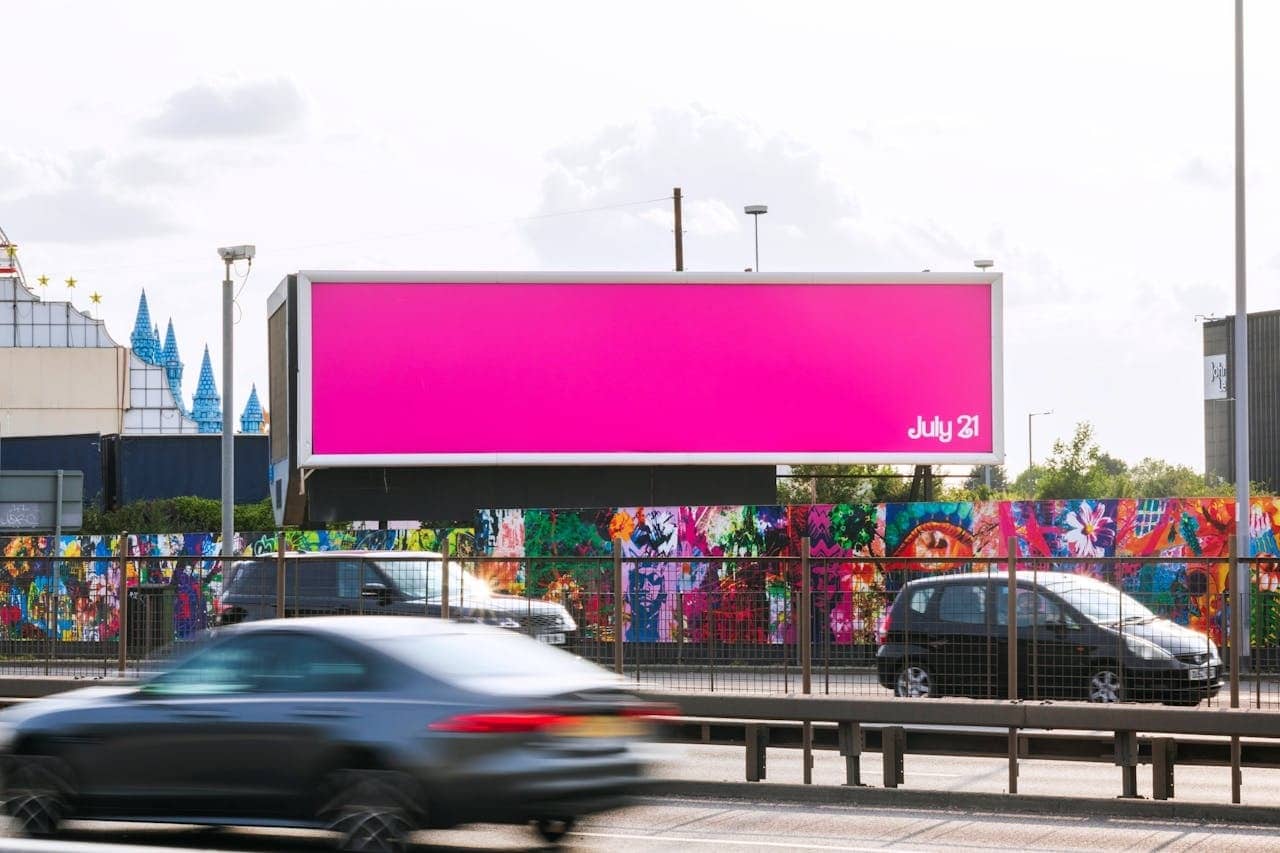Imagine discovering a brand on Instagram, visiting its website, then stepping into its store – only to feel like each encounter is with a different company. This disconnect is the pain point of inconsistent branding. Today’s consumers hop between an average of almost six touchpoints on their buying journey, with nearly half regularly using more than four (porchgroupmedia.com). When your branding isn’t uniform, you risk confusion and lost opportunities.
In this comprehensive guide, we’ll explore why brand consistency across channels matters in 2025, and how you can build an omnichannel branding strategy that delights customers at every turn. Let’s dive in!
What Is Brand Consistency in Omnichannel Branding?
Brand consistency means presenting a unified brand image and message everywhere your audience interacts with you. It’s about making sure your logo design, colours, typography, imagery, and even your tone of voice, stay true to your brand identity whether someone sees an Instagram post, an email newsletter, or walks into your office. In an omnichannel branding approach, all channels (online and offline) work together to create one cohesive experience. Every touchpoint feels like a natural continuation of the last, rather than a fragmented conversation.
Maintaining this uniformity requires deliberate effort. It starts with clearly defining your brand’s core elements – your mission, values, personality, and visual identity – and then ensuring every channel reflects those elements.
Why Consistent Branding Across All Channels Matters
Building a seamless brand across channels isn’t just an aesthetic choice; it’s a strategic imperative with tangible benefits. Here are a few key reasons why consistency is crucial:
-
Stronger Brand Recognition (and Revenue): Humans are creatures of habit who find comfort in the familiar. When your branding is consistent, people recognise and remember you more easily. Over time, that familiarity can make you the go-to choice over competitors. There’s a clear business case too with companies that maintain consistent branding having seen revenues rise by as much as 23% (exclaimer.com). Consistency essentially amplifies your marketing efforts: every ad, post or flyer reinforces the same image, making your brand stick in consumers’ minds.
-
Trust and Credibility: Consistency signals reliability. If a customer sees the same values and quality echoed in your Facebook page, your packaging and your in-store experience, it assures them that you are who you claim to be. Trust is fragile – any off-brand experience (like a wildly different tone on Twitter/X or a misaligned look in-store) can sow doubt.
-
Enhanced Customer Experience: Modern customers move fluidly between channels. They might discover you through a Google search, chat with a bot on your website, then show up at your storefront to buy. If each interaction is consistent and connected, the overall experience is smooth and enjoyable. Customers don’t have to re-orient themselves each time (“Is this the same company I saw online?”) because everything feels cohesive. This not only makes their journey easier but also leaves them with a positive impression of your brand’s professionalism.
-
Greater Loyalty and Retention: Consistency over time nurtures loyalty. When people know what to expect from your brand at every touchpoint, they’re more likely to come back. Customers stick with brands that make them feel comfortable and valued at each interaction. A consistent brand not only attracts customers – it keeps them. They’ll reward that reliable experience with repeat business and referrals.
In short, brand consistency across channels matters because it underpins customer trust, shapes positive perceptions, and drives better performance from your marketing and sales efforts. In a crowded marketplace, it can be the differentiator that makes your brand stand out as polished and dependable, whether your audience encounters you on a smartphone, in their inbox or on the street. Now, let’s explore how you can actually create this consistency in practice.
Key Elements of a Seamless Omnichannel Brand Experience
Achieving brand consistency is a deliberate process. It involves strategy, creativity, and diligence in execution. Here are the key elements to focus on when building a seamless omnichannel brand experience:
Start with a Cohesive Brand Strategy
A unified brand strategy is the foundation of all consistent branding efforts. Think of it as your brand’s blueprint or game plan. It defines who you are (mission, values, vision), who you serve (target market), what makes you different (value proposition), and how you should communicate (brand personality, tone). When you have this clarity, every channel can sing from the same song sheet. All successful branding projects, including rebrands, begin with strategy. It serves as the roadmap for effectively communicating your unique value across all touchpoints.
At Distl, our strategists work with clients to craft a comprehensive brand strategy that documents these fundamentals. This involves workshops to uncover insights about your company and audience. The output is a brand book that becomes the reference point for every branding decision.
For example, if you’re debating how your brand should respond to a trending topic on social media, your strategy (and defined brand voice) will guide the tone and stance. Similarly, if you’re designing a new brochure, your strategy ensures the messaging aligns with your core story.
By having a clear plan from the outset you can ensure all teams (branding, web, marketing, even sales and customer service) are aligned. As the saying goes, “your logo is not your brand”, it’s the strategy behind it that gives it meaning and makes it powerful. A well-defined brand strategy will inform everything from your visual identity to your campaign tactics, ensuring consistency is baked in from day one.
Maintain a Consistent Visual Identity
Visual elements are often the first thing people notice about your brand – and they create a lasting impression. Ensuring a consistent brand identity across all channels is paramount. This means your logo, colour palette, fonts, imagery style, and overall design look should be uniform wherever your brand appears.
Think about iconic brands: the moment you see Coca-Cola’s red and white script or Apple’s clean, minimalist design, you know exactly who you’re dealing with. Consistent visuals act like the signature of your brand.
Start by defining your brand’s visual standards. If you haven’t already, develop a brand style guide that codifies your logo usage rules (how it appears on dark vs light backgrounds, minimum sizes, etc.), official colour codes, typography (primary and secondary typefaces and their uses), and imagery guidelines (photography style, illustration style, iconography, etc.). Then, apply these standards relentlessly. Your website, social media graphics, business cards, packaging, uniforms, signage, every piece of collateral should look like it’s part of the same family. Harmony in design is key: each shape, photo, and graphic element should work together for a seamless brand experience.
Consistency doesn’t mean everything is identical but a customer should immediately recognise them as your brand. This also extends to new media or platforms: if you join a new social network or create a mobile app, carry over the same visual identity. The payoff? Greater brand recognition and professionalism. Even something as simple as colour consistency can increase brand recognition significantly.
If you want an example of the power of colour, look at what the marketing team was able to get away with during the run up to the Barbie movie:

Source: The Drum
Align Your Brand Voice and Messaging
Visuals catch attention, but messaging builds connection. Your brand voice is the personality of your business in words. Whether your tone is friendly and conversational, or formal and authoritative, it should remain consistent across all channels. Your key messages, the main points you want to reinforce about your value or story, should not contradict or vary wildly between platforms. Consistency in voice and messaging ensures that a customer reading your blog, scrolling your Twitter, or speaking with your sales team gets the same impression of who you are.
How do you maintain a unified voice? Start by defining it clearly in your brand guidelines: Is your brand voice warm, witty, and approachable? Or expert, educational, and serious? List out do’s and don’t’s, sample phrases, even metaphors that capture your tone. Then educate everyone who creates content or communicates on behalf of the brand. This includes marketers, customer support reps, salespeople, and even leadership on their LinkedIn posts.
For example, if one of your brand values is innovation, your messaging might consistently highlight forward-thinking solutions, your tone might be energetic and optimistic. If a customer sees an ad that’s playful and casual, but your in-store staff speak in stiff corporate jargon, it creates a jarring disconnect. Avoid that by training your team and reviewing communications for fit.
It’s also wise to develop a messaging framework – key talking points or value propositions that define your brand’s core narrative. Reinforce those across campaigns. Repetition (with variation) is good, it cements your positioning in customers’ minds. When you define and use a consistent brand voice and messaging everywhere, your audience will start to feel like they “know” your brand, which builds affinity and trust.
Need help finding your voice? Check out our insights on developing brand voice and messaging that resonates without ever changing your logo.
Bridge the Physical and Digital Experience
Omnichannel branding truly shines when you bring coherence to both digital and physical touchpoints. In 2025, the line between online and offline is blurrier than ever – customers expect a holistic journey.
Consider a customer’s potential journey: They see a Facebook ad with your brand’s distinctive imagery and friendly tone. Intrigued, they click through to your website, which should greet them with the same visual identity and messaging they saw in the ad. They browse products and decide to visit your store. When they walk in, the decor, colours, and even the music should echo that same vibe, and your staff should communicate with the brand’s tone and helpful attitude consistent with your online customer service. If done right, the customer feels like each step is part of one continuous conversation. If done poorly, it feels like starting over at square one with a stranger.
To bridge this gap, make sure your brand guidelines extend to physical spaces and human interactions. This could involve training for front-line employees to embody brand values and language, as well as close collaboration between your digital marketing team and those handling physical brand touchpoints (interior designers, event coordinators, etc.).
Remember, unifying your branding across all channels isn’t a one-time task, but an ongoing commitment. Audit your touchpoints periodically, visit your own stores, read your own email newsletters to ensure everything feels cohesive. The payoff is worth it: by presenting a unified brand everywhere, you increase customer recognition and can even skyrocket ROI from your marketing efforts.
Why Work With an Integrated Branding Agency?
Ensuring brand consistency across dozens of channels and touchpoints can be complex. It requires co-ordination, expertise in multiple disciplines, and a vigilant eye for detail. This is where partnering with an integrated branding agency can provide significant value. An agency that offers branding, web development, and digital marketing under one roof is equipped to harmonise all aspects of your brand’s presence. Here’s how an integrated approach makes a difference:
-
Holistic Strategy & Execution: A full-service agency can develop your brand strategy and visual identity, then carry it through to your website design, social media content, advertising campaigns, and even offline collateral. Because one team is orchestrating the lot, you avoid the silo effect, where say, your web developer isn’t aware of the latest brand guidelines, or your social media freelancer uses off-brand graphics. At Distl, our branding strategists and digital marketers work side by side, ensuring the campaign messaging matches the brand story crafted in the strategy phase. The result is a cohesive narrative everywhere.
-
Consistent Quality Control: When everything is managed by one agency, it’s easier to enforce consistency. Think of the agency as your brand guardians. We keep an eye on the details so you don’t have to. If you have separate vendors for design, web and marketing, inconsistencies can slip in and finger-pointing can happen. With an integrated team, there’s a single point of accountability for maintaining your brand’s integrity.
-
Cross-Channel Expertise: An omnichannel approach benefits from understanding how each channel works and how customers use them. An integrated agency brings expertise across all these channels. For example, at Distl our SEO and content team might advise on how your brand voice can be optimised for search-friendly blog posts, while our design team ensures those posts carry the right visuals. Our developers make sure the website provides a seamless user experience that reflects your brand values, while our marketing team plans retargeting ads that echo the website’s look and messaging. The synergy between disciplines creates a sum greater than its parts, your omnichannel branding becomes truly seamless.
-
Efficiency and Speed: Working with one partner for multiple needs can also be more efficient. There’s no lengthy back and forth between separate agencies or internal teams explaining your brand for the hundredth time. With Distl, once we’ve established your brand strategy and guidelines, all our specialists use that as a common reference. This means faster execution and fewer revisions due to “off-brand” work. It’s a more agile way to manage your brand which is crucial in a fast-paced market.
Perhaps most importantly, an integrated agency can help you see the big picture of your brand. We’re able to step back and view your brand from the 10,000-foot level across channels, ensuring everything connects to the same story, while also zooming in to perfect the details on each channel.
If you’re looking to elevate your brand, partnering with a team that “gets” the whole branding puzzle can save you headaches and deliver superior results. A dedicated branding agency (especially one in your locale who understands the market – e.g., a branding agency Perth businesses trust) will guide you through the process, from strategy workshops to design, to omnichannel rollout. The value of such a partnership is not only in creating a beautiful brand identity, but in implementing it cohesively across every channel and keeping it consistent as your business grows.
With Distl’s integrated team behind you, you have the support to execute branding initiatives that are airtight in consistency, giving you more time to focus on strategic growth and less time policing fonts and hex codes.







